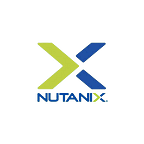Top 10 Cloud Security Trends for 2019
by Harold Bell
By aligning the right providers with your desired business outcomes, cloud computing can be a fantastic driver of business growth and end-user satisfaction. You may choose to utilize private cloud, public cloud, hybrid, or multi-cloud solutions based on the sort of information you’re going to be storing. Not surprisingly, many are still confused by the terminology used to describe the various types of clouds.
Public clouds are publicly accessed and consumed virtual infrastructures offered by, among others, AWS, Microsoft, and Google. Private cloud, as the name suggests, is a cloud environment that is created to solely support capacity that will only be used by your organization. Hybrid clouds simply refer to environments that allow for the transmission of applications and data between public and private clouds. As a growing trend in today’s economic landscape, multi-cloud environments are manifesting themselves as they provide users with access to several service models. These type of cloud environments differ from hybrids, as they suggest the presence and usage of many clouds without the interoperability between them.
In any of these approaches to cloud computing, cloud security is unquestionably one of the most significant concerns. Finding the right cloud provider(s) is not the easiest undertaking. It is important that you assess your list of potential providers for critical proactive and reactive capabilities across assorted storage mediums. Broadly speaking, cloud providers are accountable for the security inside their infrastructure. They provide organizations with some of the capabilities you need in order to protect your data while it’s in their infrastructure.
Some enterprises incorrectly assume, however, that the job of securing their data and workloads present on the cloud is the responsibility of cloud service providers. Your providers obligations are restricted to what is detailed in their contracted service-level agreement. The other thing you must not overlook is that they offer you tooling and resources to help you construct and keep up a secure system solely within their infrastructure. Multi-cloud environments are not included in their purview. In addition, data retention, security, and resilience remain the responsibility of users only. Which means that cloud security responsibilities are as much your job as they are your providers.
With that in mind, these are the top 10 cloud security trends that users must be aware of for success in 2019:
Trend #1 — Access Management
Trend #2 — Data Security
Trend #3 — Infrastructure Security
Trend #4 — Microservices Security
Trend #5 — Threat Management
Trend #6 — Vulnerability Management
Trend #7 — Secure SDLC
Trend #8 — Logging & Auditing
Trend #9 — Incident Response
Trend #10 — Compliance
Download the eBook below to get our comprehensive perspective on how to address each area for lasting success with your cloud security.
